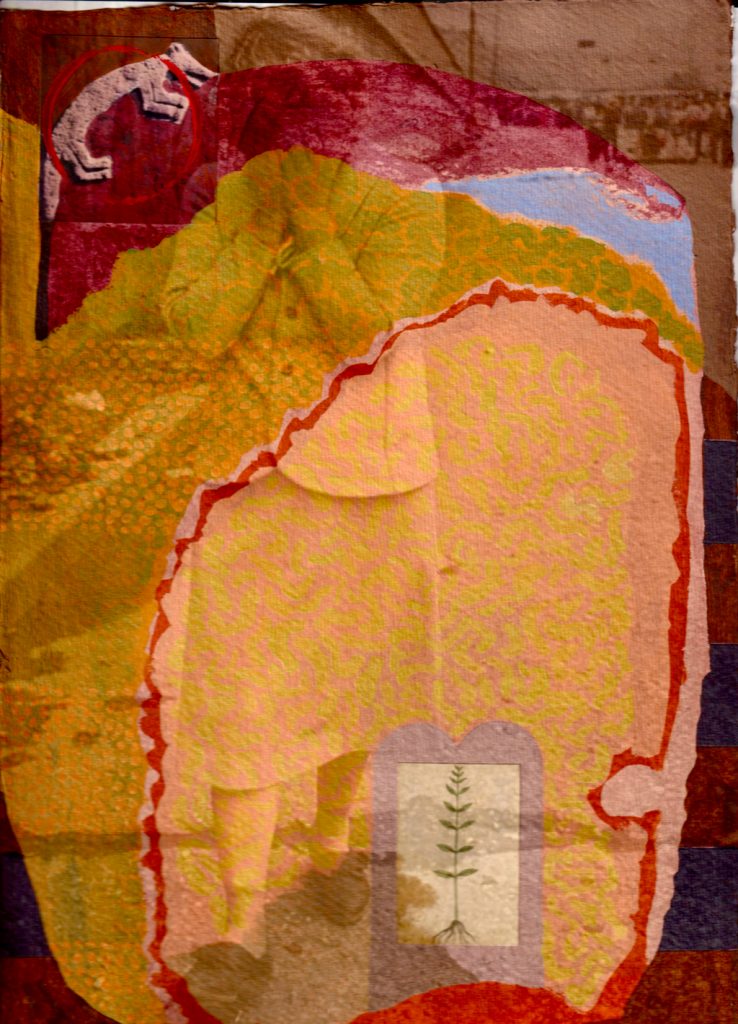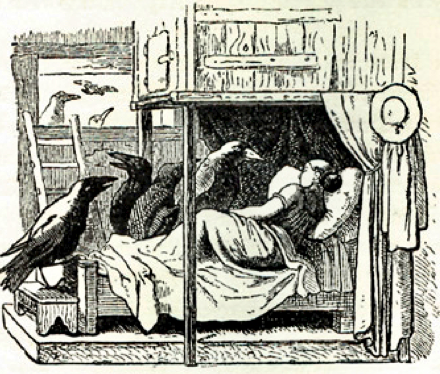
‘Planting seeds, where does that inspiration come from? What helps to free your radical imagination about the future?’
I’ve been pondering what links a sixth-century Anglo-Saxon cunning woman, Kirk’s very young maid, numerous modern poets and artists, and the accused in the Early Modern “witch” trials reported by Emma Wilby. The poet Mary O’Donnel describes ‘being worked through’; she hears lines and then identifies ‘an asexual form, a white-robed figure’ as their source. (in Rebecca E. Wilson and Gillian Somerville-Arjat Sleeping with Monsters: Conversations with Scottish and Irish Poets p. 20). A figure who happens to match the fairy familiar of the cunning women Janet Trall and the ‘white-clad spirits’ who talked with Janet Frazer, the pious daughter of a minister, in the 1680s. (Emma Wilby Cunning Folk and Familiar Spirits: Shamanistic Visionary Traditions in Early Modern British Witchcraft and Magic pp. 62 & 68 & pp. 453-454). Medbh McGuckian doesn’t always feel she’s the narrator of her poems because ‘there is someone else writing the poem sometimes’, someone who may predict ‘things in the poem and they come true… It’s like witchcraft’. (In Wilson and Somerville-Arjat p. 2). She also refers to her poetry as ‘a gift’, one directed from the deepest dream level of her mind and heart, something she links to synchronicity and to the situation:
“when you are in a heightened emotional state and need someone to help you, I think this help comes either externally or internally, maybe you just imagine. But I do think that our minds are tuned in to things that you don’t even know’.
(Chapman Hood Frazier “A Conversation With Medbh McGuckian” https://staywell.mydigitalpublication.com/publication/?i=350807&article_id=2626146&view=articleBrowser&ver=html5)
This echoes claims discussed by Wilby and others implicit in the poet Edward Hersch’s assertion that the duende and the angel only appear in poetry when ‘something enormous is at risk, when the self is imperilled and pushes against its limits’. (Edward Hirsch The Demon and The Angel: Searching For The Source of Artistic Inspiration p. xv). McGuckin’s statement is also echoed by Nuala Ní Dhomhnaill. Writing about her debt to the poet John Berryman, Ní Dhomhnaill also says that: ‘what the poet does in the process of bringing a poem together is akin to the work that a shaman does in other societies’, (Selected Essays p.139). a view echoed by the painter Paul Reynard. Similarly, Wilby claims that the techniques of Early Modern British cunning folk mirrored those of shamans. A convergence that might be dismissed as metaphorical if Dorothy Carrington hadn’t pointed out that shamans, like mazzeri, are natural poets, referencing a report that Yakouts shamans have a vocabulary three times greater than their communities. (pp. 159-160). Ní Dhomhnaill also writes:
‘the only thing I believe in and am really interested in are angels and spirits and demons and merpeople and the narratives we have invented for them, a great collective narrative which confounds and transcends the limitations of the ego-envelope’.
To reduce this” to a “black” / “white” poetry analogous to “black” / “white” magic ignores the fact that shamans, cunning folk, and even the mazzeri were valued, or at least accepted, as beneficial or necessary by their communities. The poets and artists referred to serve neither the “superhuman” nor the “sub-human” but give a voice to a fuller, more heterodox, sense of the human and its qualities. Paula Meehan’s account of her practice as a poet is indicative. She espouses Gary Snyder’s call for poets to know all they can ‘about animals as persons’, about ‘at least one kind of traditional magic’, and adopts ‘a single ancient Irish brown Bear Mother’ as a familiar and totemic ancestor-figure linked to an old, wild, pre-Hellenic Artemis. (Imaginary Bonnets with Real Bees in Them pp. 23-31). So what of inspiration, “muses” and familiars?
